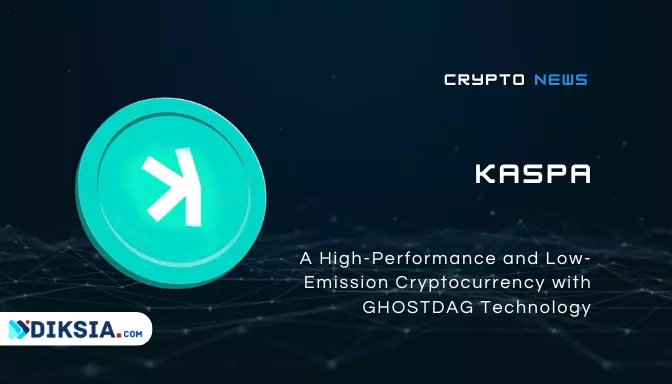Each block in the DAG contains a header and a payload. The header contains the metadata of the block, such as the hash, the timestamp, the difficulty, and the references to other blocks. The payload contains the transactions and other information that are included in the block. Each block in the DAG can reference up to two previous blocks, which are called the parents of the block. The parents of the block are chosen by the miner, who can use any strategy or algorithm to select them. However, the parents of the block must satisfy two conditions: they must be in the past of the block, and they must be in the future of the genesis block. The past of the block is the set of blocks that are reachable from the block by following the references backwards. The future of the block is the set of blocks that are reachable from the block by following the references forwards. The genesis block is the first block in the DAG, which has no parents and no references.
The references of the blocks in the DAG form a complex and rich structure, which is ordered and confirmed by the GHOSTDAG protocol. The GHOSTDAG protocol uses the blue rule and the red rule to assign a unique order to the blocks in the DAG, and to divide them into two sets: the blue set and the red set. The blue set is the set of blocks that have the most accumulated proof-of-work behind them, forming a virtual chain of blocks. The red set is the set of blocks that are not in the blue set, but are directly or indirectly referenced by the blue set, forming a complementary set of blocks. The GHOSTDAG order is the order of the blocks in the DAG, which is determined by the order of the blocks in the blue set, followed by the order of the blocks in the red set.
The GHOSTDAG order is the canonical order of the blocks and transactions in the network, which is used to resolve any conflicts or inconsistencies that may arise in the DAG. For example, if two blocks in the DAG contain conflicting transactions, such as a double-spend, the GHOSTDAG order will decide which transaction is valid and which is invalid, based on the order of the blocks that contain them. The GHOSTDAG order also provides a high level of security and finality for the network, as the blocks in the blue set are unlikely to be reverted, and the blocks in the red set are also confirmed by the blue set. Moreover, the GHOSTDAG order also provides a high level of scalability and efficiency for the network, as the blocks in the DAG can be created and validated at a very high rate, and the block data can be pruned to save storage space.
What are the advantages of Kaspa’s technology?
Kaspa’s technology has several advantages over other cryptocurrencies and blockchain platforms, such as:
- Speed: Kaspa can process transactions faster and more frequently than other cryptocurrencies, as it can produce one block per second, and aims to increase it to 10 or even 100 blocks per second in the future. This means that users can enjoy a smooth and seamless experience, without having to wait for long confirmation times or pay high fees.
- Security: Kaspa can ensure a high level of security and finality for transactions, as it uses the GHOSTDAG protocol to order and confirm the blocks in the DAG. The GHOSTDAG protocol reduces the probability of forks and attacks, and ensures that the blocks in the blue set are unlikely to be reverted, and the blocks in the red set are also confirmed by the blue set. This means that users can trust that their transactions are irreversible and secure, without having to rely on third parties or intermediaries.
- Scalability: Kaspa can support a large number of transactions per second, without compromising on decentralization and fairness. Kaspa can achieve this by using a DAG structure, which allows for parallel block creation and validation, and by using block data pruning, which reduces the storage and bandwidth requirements of the network. This means that users can benefit from a scalable and efficient network, without having to sacrifice performance or quality.
- Innovation: Kaspa can enable new possibilities and opportunities for innovation and development, as it supports subnetworks and smart contracts. Subnetworks are subgraphs of the DAG that have their own rules and logic, and can offer more functionality and privacy for the network. Smart contracts are self-executing programs that can encode and enforce complex rules and logic on the network, and can enable various decentralized applications, such as decentralized exchanges, lending platforms, gaming platforms, and more. This means that users can access and create a diverse and rich ecosystem of services and products, without having to depend on centralized platforms or authorities.
Market
What is the current market capitalization of Kaspa?
The current market capitalization of Kaspa is $3,039,926,116 USD, as of April 15th, 2023. The market capitalization is the total value of all the coins in circulation, and it is calculated by multiplying the current price of the coin by the circulating supply. The current price of Kaspa is $0.1394 USD, and the circulating supply is 21,808,366,099 KAS. The market capitalization of Kaspa ranks 35th among all the cryptocurrencies, according to CoinMarketCap.
What is the trading volume of Kaspa?
The trading volume of Kaspa is $46,435,882 USD, as of April 15th, 2023. The trading volume is the total amount of coins that are traded in a given period of time, and it reflects the liquidity and activity of the market. The trading volume of Kaspa ranks 40th among all the cryptocurrencies, according to CoinMarketCap.
Investment
Is Kaspa a good investment?
Kaspa is a promising and innovative cryptocurrency that offers a fast, secure, and scalable transaction layer for decentralized applications. Kaspa has several advantages over other cryptocurrencies and blockchain platforms, such as its high block rate, low confirmation time, low emission, block data pruning, SPV proofs, subnetwork support, and smart contract functionality. Kaspa also has a strong and active community and a dynamic and ambitious development roadmap, which reflect its vision and goals.






